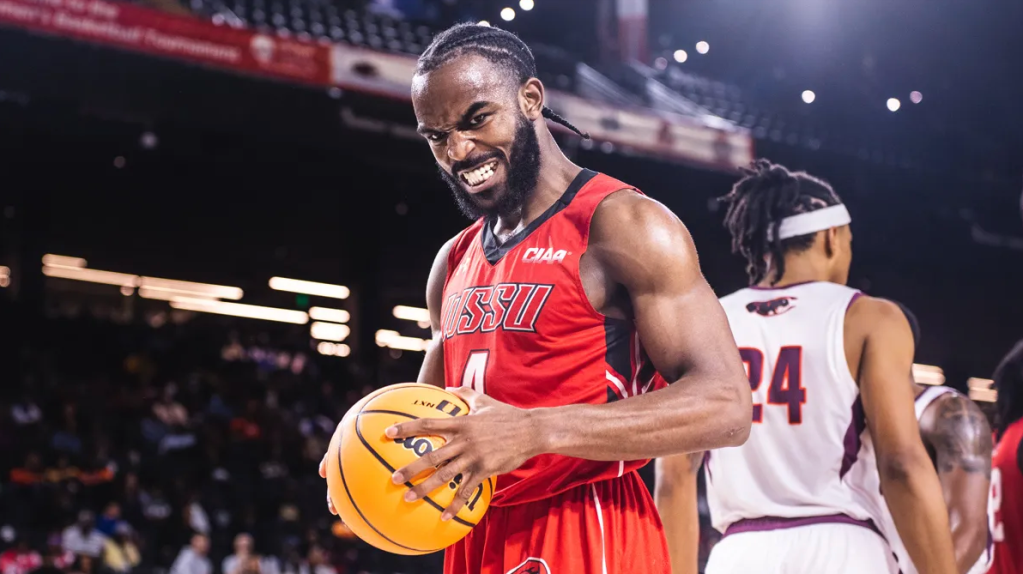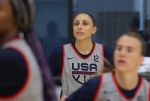Saturday’s March for Our Lives protests marked an important milestone in the national conversation surrounding gun violence. The Parkland, Fla. students have raised the national consciousness in their fight for comprehensive legislation, but we should remain steadfast that the ask for life, liberty and pursuit of justice—has been previously interrogated by youth of color.
To remind the nation of this pivotal piece of information, a series of activist groups (Women’s March Youth Empower, Hater Free NYC, Girls For Gender Equity and Million Hoodies) gathered together to organize a march in New York City centered on young people of color.
We spoke to Agunda Okeyo, the principal organizer of Saturday’s event, about the legacy of Black youth activists and centering the conversation to include the communities most affected by gun violence. Okeyo is also a writer and creator of Hater Free NYC, a political education platform, and works as a core member of Women’s March NYC.
Editor’s note: This interview was conducted over the weekend and has been condensed for length and clarity.
Today is the March for Lives in Washington, D.C.—which is a national call to end gun violence and Capitol Hill to work on comprehensive legislation that will hopefully aid in the fight. Why do you think the Parkland shooting shifted the conversation to the furthest point we’ve seen in years?
I think that people are just fed up. The shooting in Parkland was a travesty. Dozens of tips about shooter Nikolas Cruz went overlooked by both the FBI and local law enforcement. Cruz went on to kill 17 people, pulling the fire alarm for maximum casualties and still, he is understood as a “troubled” young man. I think the underlying issue that people are slowly coming to understand, is that white men and boys are the greatest threat to public safety. Cruz illustrates how whiteness gets a pass and that pass literally costs lives.
There have been many POC (people of color) who believe they have disappeared from the conversation when it comes to the recent conversation surrounding violence and the ceasing of state-sanctioned violence. Is Saturday’s youth POC march in direct reaction to that?
Yes. I believe that in the midst of America coming to grips with what has happened since the 2016 election, there’s a revisionist impulse that has to be checked. The society is finding antidotes to the current political polarization and rising tide of injustice. But as we had to remind folks at the beginning of #MeToo that a Black woman, Tarana Burke, created the movement ten years ago, we may have to keep reminding folks. It’s annoying or even infuriating, but we gotta let them know. As a native New Yorker, activist and organizer I wanted to stay close to home and attend the march here. NYC has a rich history of African-American activism from Frederick Douglass to Ella Baker.
Do you believe the Parkland advocates/students have done enough to show inclusivity in their approach?
I think they tried, but it’s a work in progress. NYC had a pretty diverse lineup of speakers though I’m not sure the crowd was as reflective. I know there was a conscious effort to include youth of color in D.C., bussing thousands of students in, which is a beautiful thing. I know a lot of Black women leaders made that happen, like NAACP Youth & College Dept. Director Tiffany Loftin who brought 1000 young people. Just days earlier Stephon Clark was shot 20 times by police in his own backyard for holding a cell phone. That is gun violence. Protests in Sacramento were decidedly different in mood and tone from March for Our Lives as a community struggles to reconcile this terrifying and senseless murder. We might as well call it a lynching [Clark] because it makes about as much sense.
How many youths are you expecting to attend Saturday’s event?
We had a tidy group, about 50 youth of color, who we brought to the NYC march. But I suspect that many more came at different points of entry because we put out a call for them to attend. Million Hoodies, Women’s March Youth EMPOWER, Girls for Gender Equity and Hater Free NYC came together just a few days before the march and decided it made sense to create space for youth of color. A number of parents and elders thanked us for holding space for young people, making attending a more empowering experience. To their credit, March for Our Lives organizers were welcoming once I reached out. Unfortunately, and rather predictably, organizers worked extremely closely with police in coordinating the action. Our contingent even had a little miscommunication with NYPD managing entry to the front of the stage. We got in, but it was telling about differences in what safety looks like for white people versus people of color.
Can you delve into your group’s specific asks? Do they differ from the larger conversation surrounding gun violence?
As the principal organizer, my personal objective was to hold space for young people from communities affected by gun violence, orgs working on issues connected to gun violence and people of color who want to march but didn’t feel centered. I think I achieved my objective.
As a collective we had several demands:
- Whatever gun legislation is proposed or other corrective measures, Black people, especially those doing the work, be centered in any legislative discussions and prescriptions.
- We call for a radical reimagining around safety to think about what it looks like and who it is for. In schools, girls, trans and gender non-conforming (TGNC) youth of color deserve learning environments where they are not disciplined for who they are. Girls and TGNC youth of color, like all children, deserve safe, respectful, affirming school communities free from violence, discrimination, and stigma. To accomplish this, schools must foster positive climates that include but is not limited to, divesting from harmful discipline practices, community involvement and limits the role of law enforcement inside of schools *(1).
- In addition to bringing our seats to the table where policy discussions are had, local, state, and federal governments need to invest more in community programs, jobs, and education, along with local strategies that have contributed to reductions in gun violence like focused deterrence, hospital-based intervention, and more comprehensive de-escalation training for police officers.
Student-led activism is deeply embedded in America’s history–can you talk about why it’s so important for young people of color to participate in today’s event?
I think like Nas said, “The world is yours.” And we need to keep reminding youth of color that they matter. We need to remind them that their elders fought for their rights today and many of them were their same age when they did it. The young woman who inspired Rosa Parks to stay in her seat was 15-year-old Claudette Colvin from Montgomery. Colvin was arrested for refusing to give up her seat to a white passenger on a segregated bus on March 2, 1955. In a strategic action months later in December, Parks sat on a bus sparking the Montgomery Bus boycott. A 13-month mass protest ended with the U.S. Supreme Court ruling that segregation on public buses is unconstitutional. So that is why Black and brown youth matter. Sometimes we just need to come through to these decidedly white spaces and assert who we are just by being present. Sometimes we change the Constitution.
What do you hope comes out of the respective marches?
I hope the marches across the country and the world help us understand collective power. I hope that the ongoing leadership of Black people is respected and heard in next steps towards better gun control. I hope that Black and brown youth continue to lead us like Claudette Colvin. And I hope that we begin to face the ever-growing threat of giving whiteness a pass like with Nikolas Cruz, or Austin bomber Mark Conditt, who literally blew himself up after confessing to two murders and four injuries from his package bombs. Although not all their victims were people of color, their lethal actions as scorned young men, were facilitated by white privilege and a socially constructed sense of entitlement. I hope white people, in particular, remember that.
*(1) Brathwaite, B., & Hudson, K. (2017). The school girls deserve: Youth driven solutions for creating safe, holistic, and affirming New York City public schools. New York, NY: Girls for Gender Equity.
READ ALSO:
This 11-Year-Old Made Sure That Black Girls Were Front And Center At The ‘March For Our Lives’ Rally
MLK’s Granddaughter At March For Our Lives: ‘I Have A Dream That Enough Is Enough’
An Ode To The Black Families Left Behind
NYC Black & Brown Youth Want You To Know, ‘We Been Marching’ was originally published on hellobeautiful.com
















